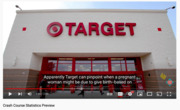
Linking Attitudes and Behaviors to Student Success in Career and Technical Education
stem.utah.gov
Currently, many Career and Technical Education (CTE) align with fast growing high-tech and STEM-related industries, such as computing, cybersecurity, advanced composites and materials, and engineering. CTE also supports a greater understanding of science, technology, engineering, and math (STEM) content and the development of STEM competencies for a broad range of students. Access to careers in high demand CTE areas are critical for students in rural areas and in poverty. Building a strong talent pool in rural areas could increase the economic growth of these communities. Unfortunately, enrollments is low in many CTE programs that educate students for high demand technical career pathways (e.g., computer science and information technology). Although they are limited in scope, studies suggest that the low enrollment may result from student misperceptions that make pursuing CTE programs undesirable. This ATE funded research project explores how student attitudes and behaviors may link to their success in CTE.







